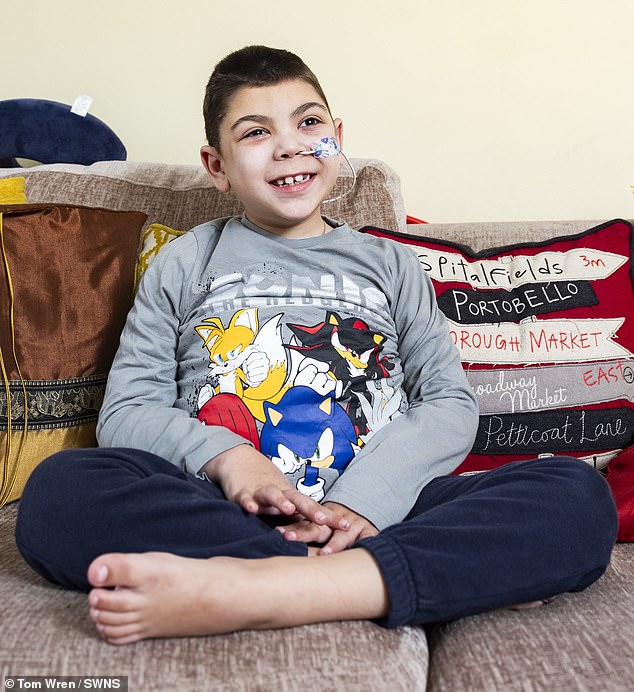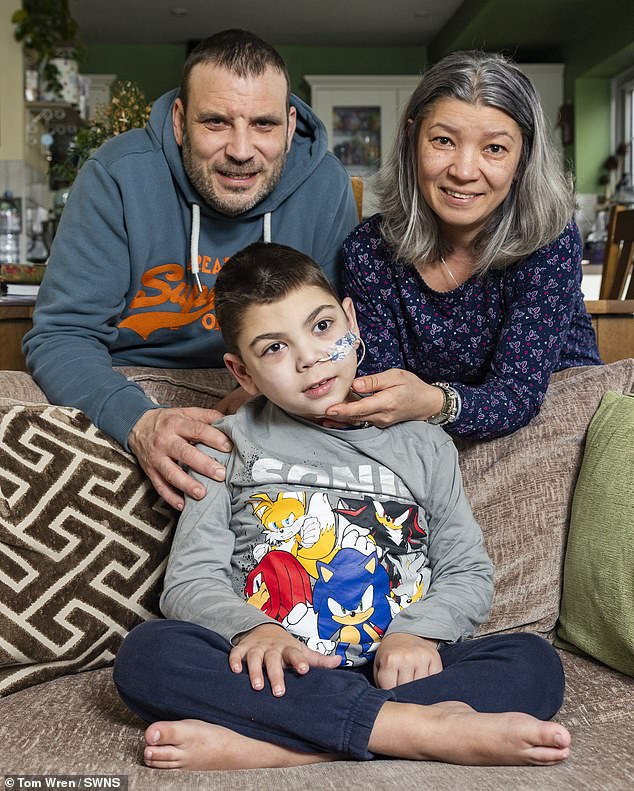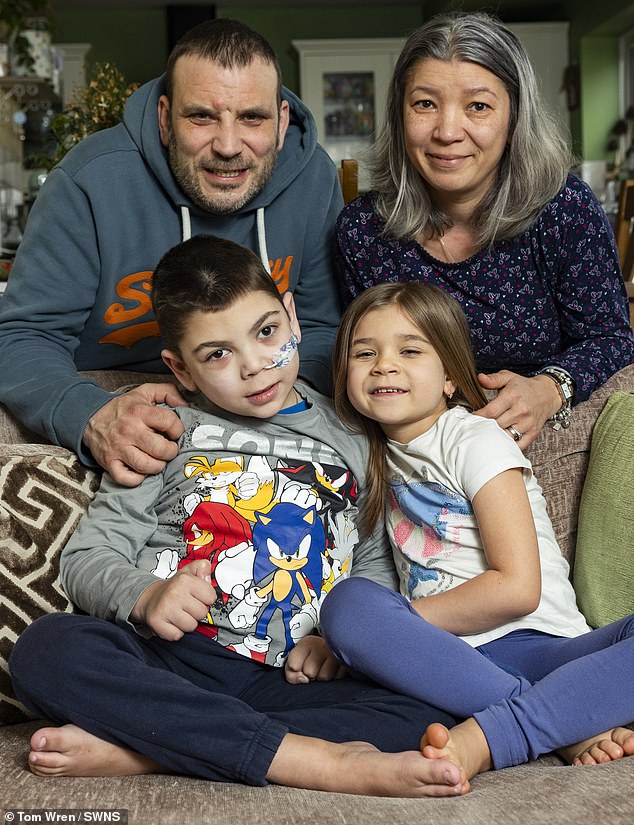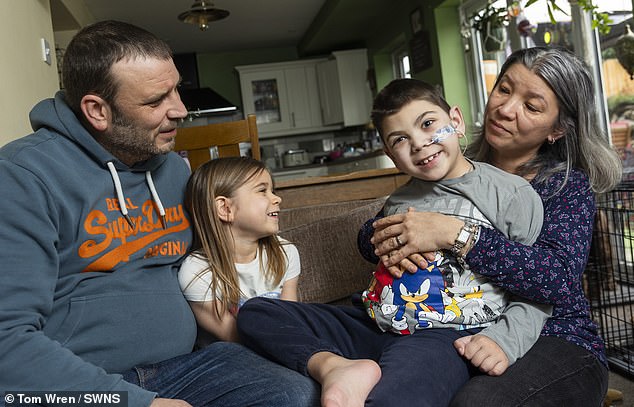A nine-year-old boy diagnosed with an extraordinarily rare genetic disease has been told his next seizure could be his last.
William Howard was originally told by doctors that his strange symptom, a tic in his right leg, could be due to “stress” from playing Minecraft.
But after “endless” medical investigations, tests revealed that mitochondrial disease was actually to blame for his sudden, random spasms, which caused him to repeatedly fall.
William is one of 10 people in the world who have his particular variation, his parents say.
Simon, 45, and Mihaela, 43, from Swindon, say he went from being a normal, healthy child to being paralyzed by seizures seemingly overnight.

Doctors told nine-year-old William Howard (pictured) that his initial symptom, a tic in his right leg, could be due to stress from playing Minecraft.


After “endless” medical investigations, an MRI confirmed that he suffers from a mitochondrial disease, which causes the cells to not produce enough energy. His parents, Simon, 45 (left) and Mihaela, 43 (right), say he went from being a normal, healthy child to being paralyzed by seizures, seemingly overnight.
Mrs Howard, a former nurse, said: “Doctors have told us to prepare for the worst. One more seizure could be enough for William. “We are terrified but he is a fighter.
‘It’s a reason to get out of bed in the morning, because it’s just another day with William.
“I’ll check on him and see that he’s sleeping in his bed, and at that point I think we have at least one more day together.”
William’s parents first noticed that his right leg was starting to “fall off” when he tried to walk and after a while they became concerned.
Howard, a head chef, called 111 and was told to take him to the GP the next day.
However, she took him to the hospital on May 21, 2020 when she noticed he was having trouble walking to the bathroom.


His parents and six-year-old sister Sofía (pictured right) underwent a DNA test to detect the typically hereditary disease, but neither of them had the gene.
“William was walking around normally, but suddenly his leg gave way and he fell,” Mr Howard said.
“He would laugh, spin around and it would happen again.” We thought he was joking but then he became more consistent.
“So we took him to the hospital, where he was initially told he might have broken his tailbone.
“They recommended that we transfer him (to a specialized hospital) for further tests, so we took him.”
At first, doctors feared it could be due to Covid, since it was the beginning of the pandemic and doctors did not want to rule anything out.
But after a test came back negative, doctors told the couple it could actually be due to stress.
“William was watching Minecraft nonsense on YouTube,” Mr Howard said.
“He was getting nervous. So we thought this must be the reason.”
“They literally threw his game in the trash while he was at the doctor, but then the weakness started affecting his upper body.”
William was sent for further tests but suffered a full-body tonic-clonic seizure that causes stiffness and uncontrollable muscle contractions.
He was then placed in an induced coma to protect his brain from damage. while the doctors did more tests.
Doctors eventually diagnosed him with mitochondrial disease, a general term that covers several syndromes caused by defects in mitochondria, power centers of cells that give our bodies energy to function.
According to estimates, approximately one in every 5,000 people suffers from mitochondrial disease.
But William is said to have a particular type, linked to a defective protein called DNML-1.
Only nine other people in the world are believed to have the same type, his family says.
There is no cure and treatments are simply supportive to relieve seizures and other characteristic symptoms, such as muscle weakness and visual problems.
Some patients suffer from dystonia, a movement disorder that can cause uncontrolled muscle cramps and spasms. It may also include body parts that are twisted into unusual positions.
William did not receive an official prognosis, but doctors warn that each seizure could be his last, his parents say.
“I needed a lot of time to cry and calm down,” Mrs. Howard said.
‘I needed to be alone. I could not believe it.’
William spent two months in a coma and woke up in July 2020.


The couple say they were “grateful” to have been able to make memories with William over the Christmas period, despite making do with no tree, decorations or Christmas dinner.
He has since lost the ability to eat and drink and doctors say, according to the family, that the disease is slowly shutting down each of his vital organs.
After suffering another massive seizure that lasted 56 minutes, he entered his second induced coma on December 7, 2023.
Mr Howard said: “The doctor told him this could be the problem but it was only there for a week.”
“We prepared for the worst; on the day of his big seizure, he also had 13 other seizures,” Mrs Howard added.
“The doctor was very surprised because he recovered after only a week, and William was even able to recover at Christmas,” she said.
